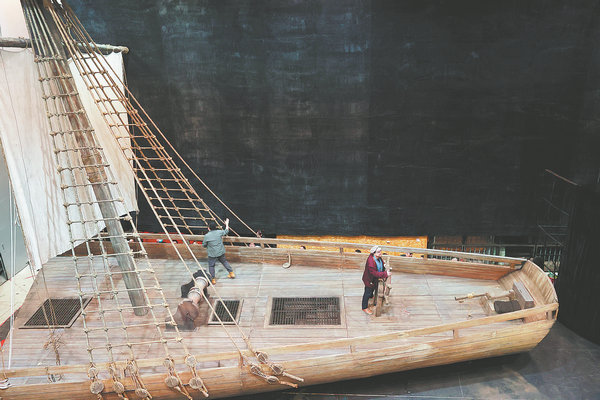

Wagner was inspired to write the libretto and score for The Flying Dutchman after a rough, stormy voyage from Riga to London. It premiered in 1843.
The NCPA first commissioned its version of the opera in 2012 to celebrate the 200th birth anniversary of the great composer, which was in 2013. It was directed by Giancarlo Del Monaco and was the venue's first opera production since its opening in 2007. In 2013, it staged the opera for a second time.
To lend a spooky undertone to the mysterious Dutchman and his equally mysterious ship, set designer William Orlandi has combined lighting, veils and visual effects to put the audience in the right mood.
According to Del Monaco, who came to Beijing in 2012 and 2013 to direct the opera, and whose repertoire extends to more than 100 productions, The Flying Dutchman leaves audiences feeling exhilarated, but not exhausted, with its "great balance of stagecraft and scenery, cast and orchestra, acting and singing".
"When we did the first round of The Flying Dutchman, there were no intermissions, which made changing scenes a challenge," says Li, adding that about 70 people are involved in the process of shifting the scenery from ship to home to harbor. "Now, more than 10 years later, when we stage the opera again, we have improved technology to whip up cosmic wind and storms."
Nearly three hours long, this time there is an intermission, and acrobats will play the role of the sailors, climbing masts in the middle of a storm or during high winds and reefing.